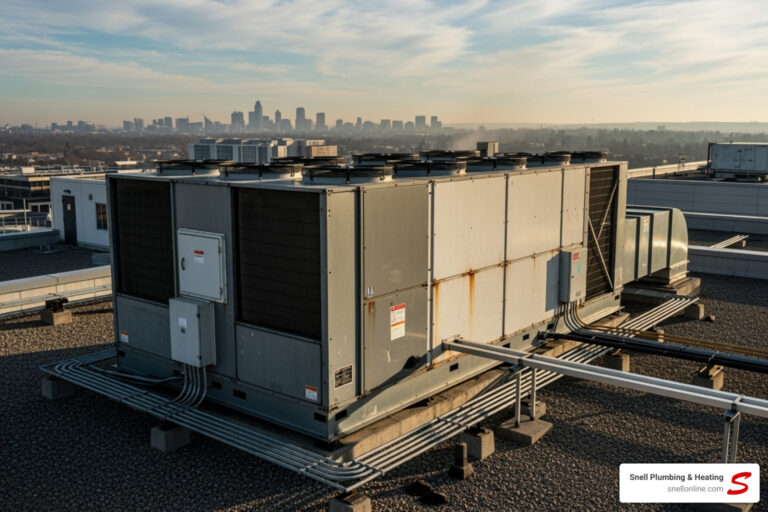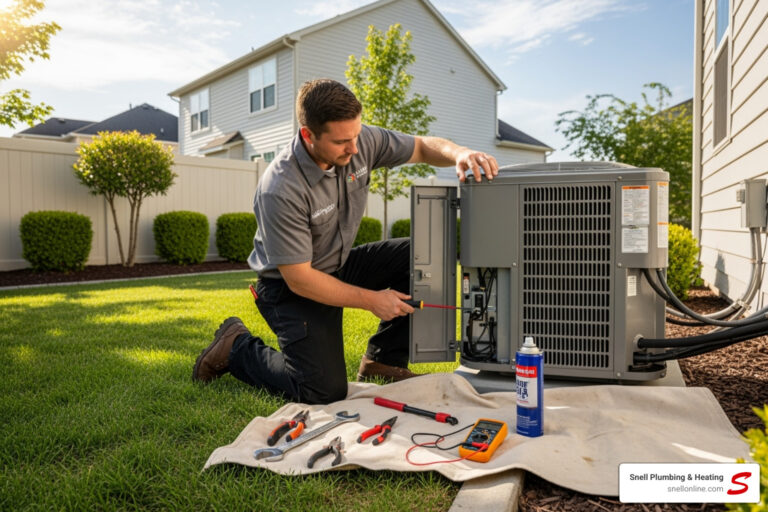Humidity problems can sneak into any room of a home and cause discomfort before you even realize what’s happening. Bathrooms feel sticky, basements start to smell musty, and kitchens carry a damp feeling that no amount of ventilation seems to help. These are frustrating symptoms many homeowners in Springfield recognize, especially during the warm summer months when moisture naturally rises. Left unaddressed, excess humidity doesn’t just affect air quality. It can lead to mold growth, warping of wood furniture, and a general decline in indoor comfort.
More people are turning to solutions that go beyond a basic dehumidifier or overworked central HVAC system. One of the most effective options for targeting moisture issues room-by-room is the ductless mini split. These systems are compact, energy-efficient, and capable of managing temperature and moisture in a very specific way. If you’re dealing with sticky air in one or two parts of the house, and your current system isn’t helping, it may be time to think about how a ductless mini split in Springfield could make a noticeable difference.
Understanding Humidity Issues in Homes
Humidity issues are not isolated to old or poorly maintained homes. Even well-built, updated properties in Springfield can struggle with excess moisture depending on the design, use of space, and ventilation setup. Some rooms are just more likely to run into problems.
Here’s a breakdown of the top places in a home where humidity tends to build up and why that happens:
– Bathrooms: With daily showers and poor airflow, these rooms trap a lot of steam and moisture. Even a good exhaust fan may not be enough to dry out the space efficiently.
– Kitchens: Cooking, boiling water, and running dishwashers all release steam and heat. Unless windows are open, the humidity lingers and makes the space feel damp.
– Basements: These areas are closer to the ground, which means it’s harder for natural air circulation to remove the trapped moisture. Lack of sunlight and airflow makes it worse.
– Laundry rooms: Running a dryer, especially one without proper venting, adds more moisture to the indoor air quickly.
You might first notice signs like condensed water on windows, a musty odor, or that clammy feeling when the room doesn’t cool down even with AC on. The impact reaches beyond comfort. Long-term humidity can slowly damage furniture, flooring, and walls. It can even make it harder to sleep or breathe, especially for those with asthma or allergies. Managing these indoor conditions year-round is important.
How Ductless Mini-Splits Manage Humidity
Ductless mini-splits are an effective way to control both temperature and moisture without relying on a large HVAC system to do all the work. These systems include two main parts: an outdoor compressor and one or more indoor air-handling units that are mounted directly in each room needing service. Because they don’t use ductwork, they offer more direct control and efficient treatment of specific spaces.
Here’s how they help manage humidity:
– Each unit is equipped with a built-in humidity sensor that works alongside the cooling cycle to identify excess moisture in the room.
– The system draws in warm, moist air, cools it using a refrigerant, and then removes the moisture as condensation, draining it away safely.
– Because each unit runs independently, it allows for custom humidity control in individual rooms. This is perfect for spaces like kitchens or bathrooms that need more targeted treatment.
One Springfield homeowner shared that their basement always felt damp, even with the central air running. After installing a ductless mini split in that area, they reported a noticeable change in the air’s freshness and comfort. No more musty odors, and the room stayed cool longer without constantly adjusting the thermostat.
This kind of system provides more than just cooler air. It fine-tunes the comfort level in each part of the home by removing the moisture that often gets overlooked by traditional systems. Many units also include air filters that trap dust, pollen, and other allergens.
Choosing the Right Ductless Mini-Split for Your Springfield Home
When adding a ductless mini-split to address humidity issues, the first step is choosing the correct unit for your specific needs. Not every room in a Springfield home is built the same, so the system you install should match the space.
Homeowners should take these factors into account:
– Room size: Units come in different capacities. Choosing one that’s too small for the room won’t remove enough humidity, while one that’s too large may short cycle, leading to poor humidity control.
– Current moisture levels: If your basement or laundry room constantly feels damp, you’ll need a system that can handle higher moisture loads.
– Sun exposure and insulation: Rooms that get a lot of sun and have older insulation may require a more powerful unit.
Once you’ve found the right model, installation becomes just as important. Professional installation ensures the unit is placed in a spot that maximizes airflow and efficiency. If positioned incorrectly, the system may struggle to treat the whole room evenly. Regular maintenance is also necessary to keep it running well over time. Cleaning filters, checking refrigerant levels, and inspecting drain lines help avoid the return of moisture problems.
In Springfield households where humidity varies from room to room, selecting the right ductless system and keeping it properly maintained can make a noticeable difference in overall comfort.
Advantages of Ductless Mini-Splits Over Traditional HVAC Systems
It’s helpful to understand what sets ductless mini-splits apart from traditional whole-home air systems when looking for moisture control. Older systems push conditioned air through ducts, which means the response is uniform across every space. This may work well for even temperature control, but it doesn’t offer flexibility where one room gets too humid while another stays dry.
Ductless mini-splits take a different approach. Each indoor unit targets a specific area. If your upstairs bathroom needs more moisture removal than your living room, you can run them separately and supply power only where it’s needed. Compared to traditional HVAC setups, this approach offers several advantages:
– Better control over individual rooms
– No energy wasted on ducts
– Faster response to changes in humidity
– Easier upgrades or add-ons in specific areas
This setup makes it more efficient to target problem spots without needing to cool the whole home when only one area feels damp. A ductless mini-split works smarter by customizing comfort where it matters most.
Maintaining Comfortable Humidity Levels Year-round
Once a ductless mini-split is installed, managing humidity does not stop there. Staying on top of seasonal changes ensures your home stays comfortable even when Springfield weather moves from hot, stormy summers into cooler, damp falls.
Here are a few tips to keep the system performing well throughout the year:
1. Clean or replace filters: Dirty filters restrict airflow and lower efficiency, especially during humid months.
2. Check for blockages: Make sure vents and drainage lines are free from buildup or debris that can interfere with airflow and drainage.
3. Use system features: Many mini-splits offer modes designed to remove moisture without running a full cooling cycle.
4. Watch seasonal humidity trends: In late summer, consider lowering the fan speed. This allows more time for the indoor unit to remove moisture from the air.
5. Schedule yearly inspections: Our professionals can identify and fix small issues before they become large problems.
Staying proactive with maintenance helps keep humidity levels consistent and the system running efficiently across all seasons.
Achieve Ideal Indoor Comfort with Our Solutions
Humidity doesn’t always affect the whole house evenly. Often, only a few rooms cause most of the trouble. That’s where a ductless mini-split can make a major difference. These systems are effective and precise, and when installed correctly, they remove moisture before it becomes a bigger concern.
Whether you’re dealing with a damp basement, sticky bathroom, or humid kitchen, ductless mini-splits offer targeted moisture control with less energy use and more flexibility. For Springfield homes with specific humidity problems, whole-home HVAC systems often fall short. Mini-splits allow you to get to the source of the problem and resolve it quickly without making sweeping changes to your full system setup.
Managing room-by-room humidity is practical and possible with the right solution in place. Ductless mini-splits allow for better comfort, air quality, and peace of mind throughout your home.
If you are looking to manage room-specific humidity, exploring a ductless mini split in Springfield can provide targeted control and increased comfort without disrupting your home’s layout. Snell Plumbing & Heating understands that properly installed systems can significantly improve indoor air quality and eliminate moisture issues over time, which is why our professionals recommend regular maintenance and expert installation. For a quick estimate or to book a service appointment, please contact us today.





